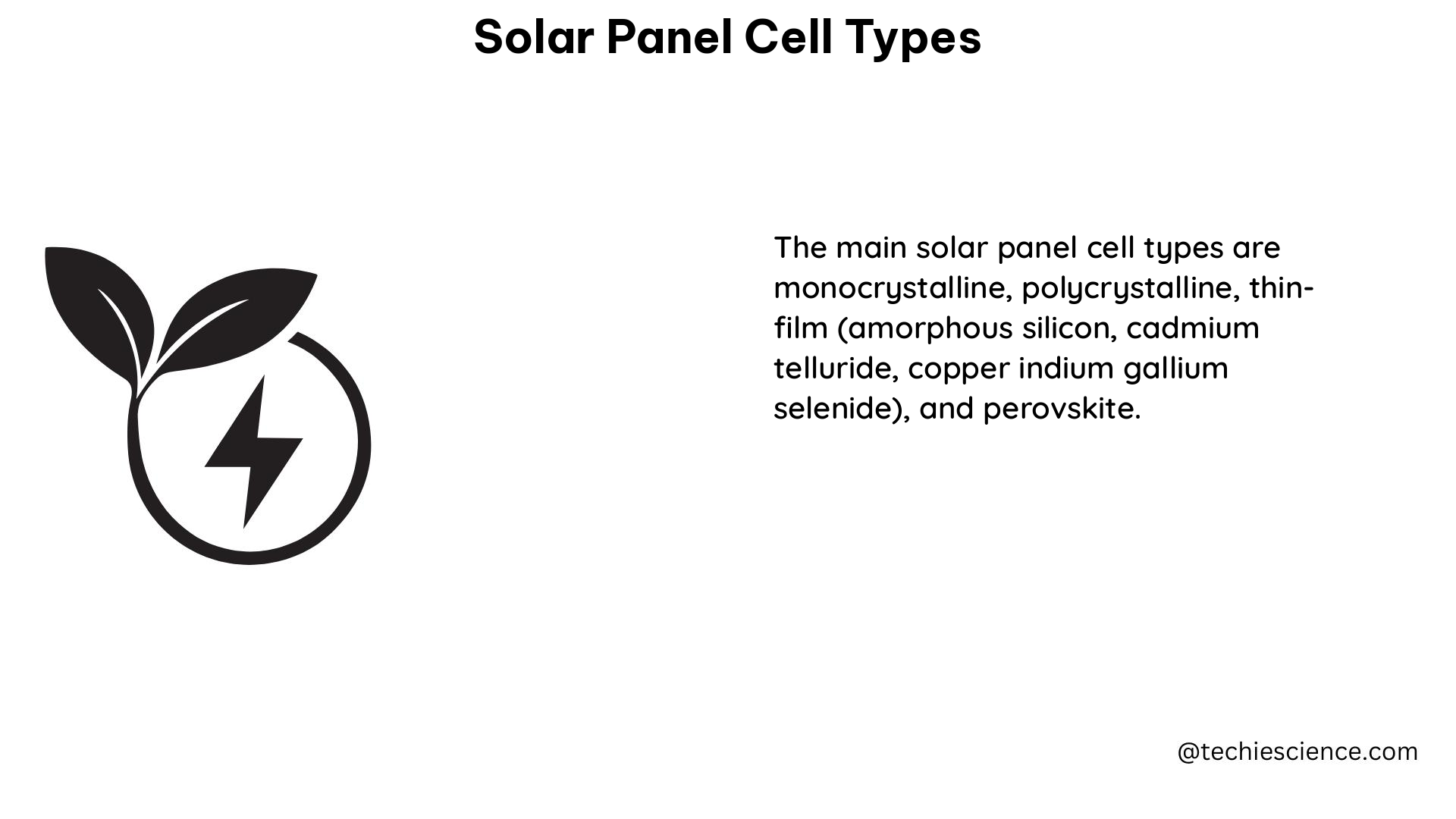Solar energy has become an increasingly popular and viable source of renewable power, and the heart of any solar photovoltaic (PV) system is the solar panel cell. These cells come in various types, each with its own unique characteristics, advantages, and disadvantages. In this comprehensive guide, we will delve into the details of the four main solar panel cell types: monocrystalline silicon (mono-Si), polycrystalline silicon (poly-Si), thin-film technologies, and multijunction cells.
Monocrystalline Silicon (mono-Si) Solar Cells
Monocrystalline silicon solar cells are made from a single, continuous crystal of silicon. This uniform structure gives them a distinctive, dark-colored appearance. Mono-Si cells boast the highest efficiency among all solar cell types, with a maximum theoretical efficiency of around 32%. The best commercially available mono-Si panels have efficiencies ranging from 18% to 22%.
Key Characteristics of Mono-Si Solar Cells:
– Efficiency: 18% to 22% (best commercial panels)
– Maximum Theoretical Efficiency: ~32%
– Appearance: Uniform, dark color
– Manufacturing Process: Energy-intensive, more expensive than poly-Si
– Advantages: Higher power output, longer lifespan
– Disadvantages: Higher manufacturing cost
Polycrystalline Silicon (poly-Si) Solar Cells

Polycrystalline silicon solar cells are made from multiple, smaller crystals of silicon. This results in a speckled, blue appearance. Poly-Si cells have a lower efficiency than mono-Si cells, with a maximum theoretical efficiency of around 29%. The best commercial poly-Si panels have efficiencies ranging from 15% to 18%.
Key Characteristics of Poly-Si Solar Cells:
– Efficiency: 15% to 18% (best commercial panels)
– Maximum Theoretical Efficiency: ~29%
– Appearance: Speckled, blue color
– Manufacturing Process: Simpler and less energy-intensive than mono-Si, lower cost
– Advantages: Lower manufacturing cost
– Disadvantages: Lower power output, shorter lifespan
Thin-Film Solar Cells
Thin-film solar cells are made from a variety of materials, including amorphous silicon (a-Si), cadmium telluride (CdTe), copper indium gallium selenide (CIGS), and gallium arsenide (GaAs). These cells have a lower efficiency than mono-Si and poly-Si cells, with a maximum theoretical efficiency ranging from 15% to 30%, depending on the material used.
Key Characteristics of Thin-Film Solar Cells:
– Efficiency: 10% to 15% (best commercial panels)
– Maximum Theoretical Efficiency: 15% to 30% (depending on material)
– Materials: a-Si, CdTe, CIGS, GaAs
– Manufacturing Process: Low material usage, simple production, lower cost
– Advantages: Lower manufacturing cost
– Disadvantages: Lower power output, shorter lifespan
Multijunction Solar Cells
Multijunction solar cells are made from multiple layers of different semiconductor materials, such as gallium arsenide (GaAs), indium phosphide (InP), and germanium (Ge). This unique structure allows them to capture a broader range of the solar spectrum, resulting in the highest efficiency among all solar cell types, with a maximum theoretical efficiency of around 87%. The best commercial multijunction panels have efficiencies ranging from 30% to 45%.
Key Characteristics of Multijunction Solar Cells:
– Efficiency: 30% to 45% (best commercial panels)
– Maximum Theoretical Efficiency: ~87%
– Materials: GaAs, InP, Ge
– Manufacturing Process: Complex, more expensive than other cell types
– Advantages: Highest power output, longest lifespan
– Disadvantages: Higher manufacturing cost
Emerging Photovoltaic Technologies
In addition to the four main solar panel cell types, there are also several emerging photovoltaic technologies, such as perovskite cells, organic cells, and dye-sensitized cells. These technologies are still in the research and development stage and have lower efficiencies and higher costs than the established cell types. However, they offer potential advantages, such as flexibility, lightweight, and low-cost production, which could make them competitive in the future.
Emerging Photovoltaic Technologies:
– Perovskite Cells
– Organic Cells
– Dye-Sensitized Cells
As the solar industry continues to evolve, the performance, cost, and availability of these solar panel cell types will play a crucial role in the widespread adoption of solar energy. Understanding the unique characteristics and trade-offs of each cell type can help consumers, installers, and policymakers make informed decisions when selecting the most suitable solar technology for their needs.
Reference:
- PV Cells 101: A Primer on the Solar Photovoltaic Cell
- Electrical Performance Measurements of Solar Photovoltaic Cells and Arrays
- Best Research-Cell Efficiency Chart | Photovoltaic Research – NREL

The lambdageeks.com Core SME Team is a group of experienced subject matter experts from diverse scientific and technical fields including Physics, Chemistry, Technology,Electronics & Electrical Engineering, Automotive, Mechanical Engineering. Our team collaborates to create high-quality, well-researched articles on a wide range of science and technology topics for the lambdageeks.com website.
All Our Senior SME are having more than 7 Years of experience in the respective fields . They are either Working Industry Professionals or assocaited With different Universities. Refer Our Authors Page to get to know About our Core SMEs.